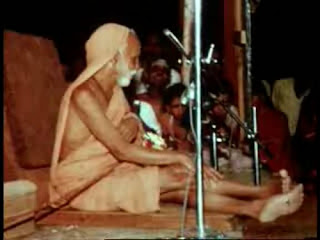(Continued...)
Next
comes the actual subtle sound, called .madhyamA..
This is not produced by any human voice. It arises by itself. This is therefore
midway between the subtle sound of ‘pashyantI’
and the actual sound of the human voice, which is physical. Hence the name ‘madhyamA’, which means ‘what is in the middle’.
This
is a self-generated sound. It is therefore also called ‘anAhata’. ‘Ahata’
means ‘what is forced or externally generated’. That which is not forced or not
generated externally, is the ‘anAhata’ sound.
(Continued...






























